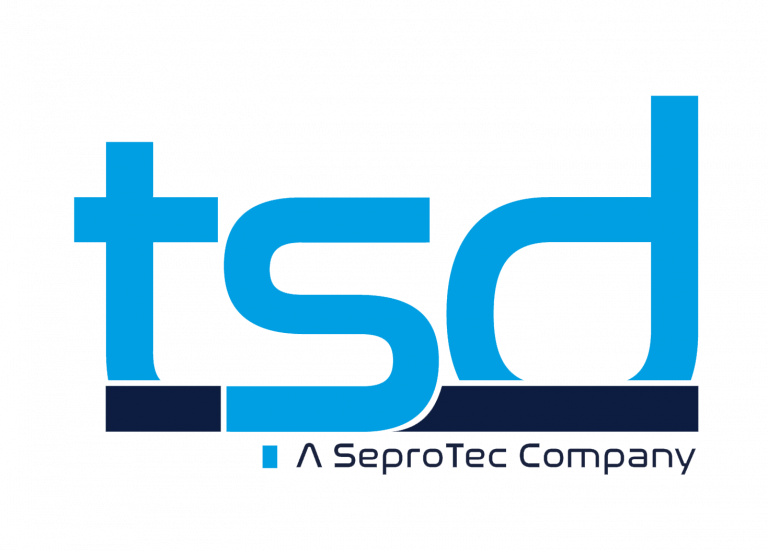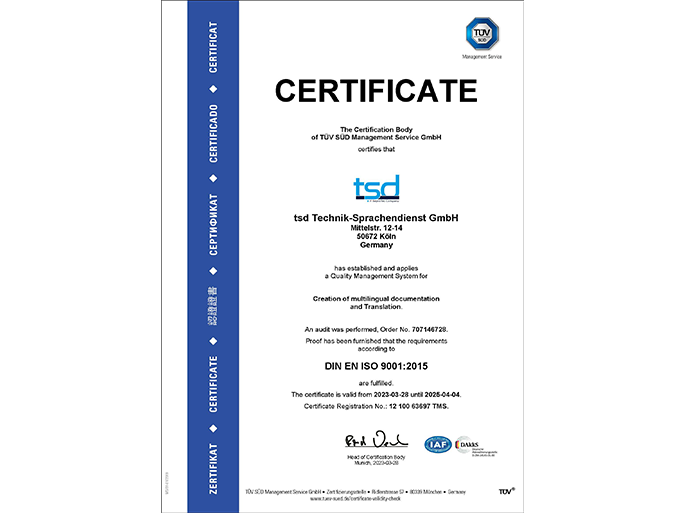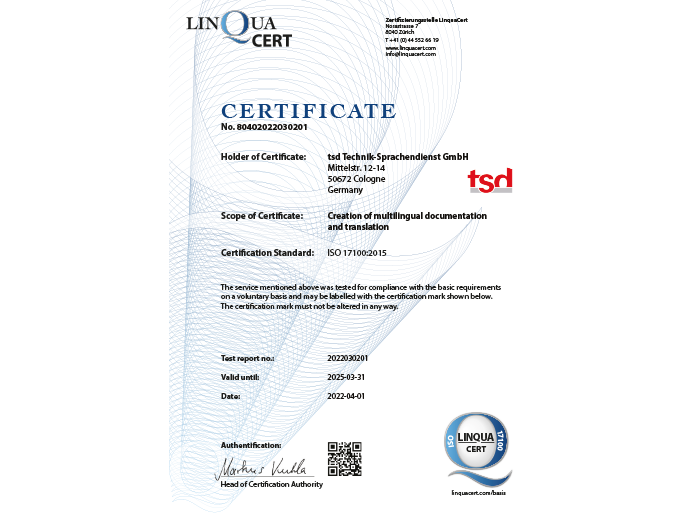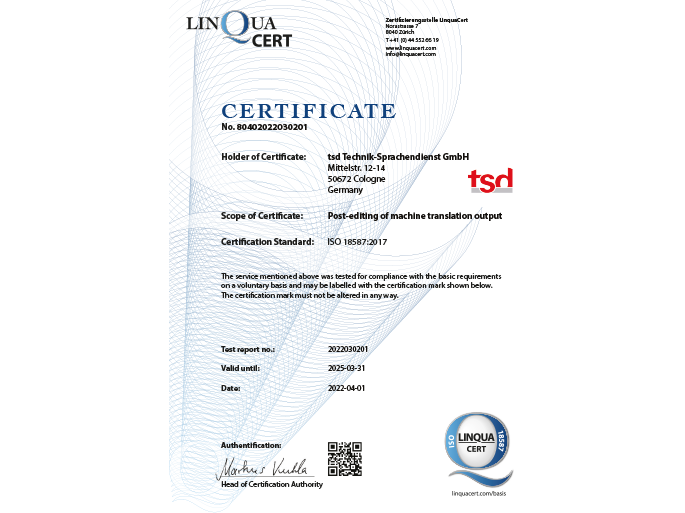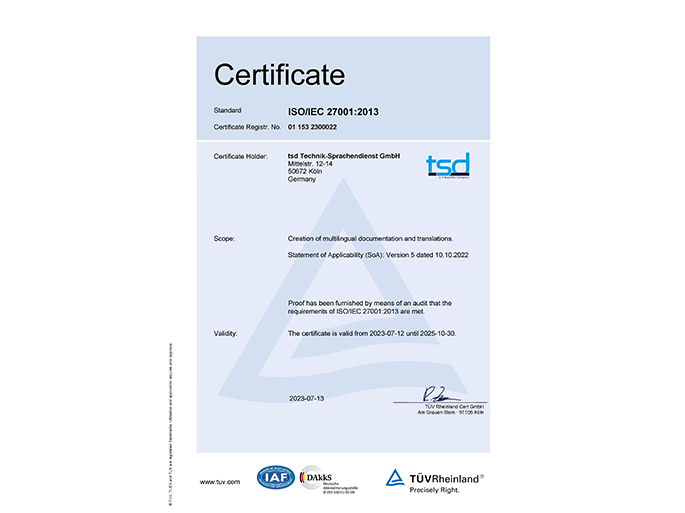Quality
The perception of quality and its many facets is a key criteria customers use to decide on a service provider. At tsd, quality means more than simply product quality. Our understanding of quality also encompasses defined and transparent processes that can be flexibly adapted to particular requirements, friendly communication and a faultless final result.
All processes are incorporated into our quality management system, which we continuously further develop and adjust to new requirements.
As part of this, we have defined three dimensions which reflect our high standards and which we use to measure quality:

To demonstrate the standards underlying our quality management system to our customers in a transparent way, it has been certified in accordance with the current DIN standards since 2003.
Certified quality management and Information Security Management System
Our quality management system is certified according to the standards DIN EN ISO 9001:2015 and ISO 17100:2015. Processes for controlling quality on a linguistic, technical and organisational level defined in accordance with these standards ensure that the products and services we deliver to you always meet the highest quality demands. We also use tools developed internally for creating and ensuring high quality.
In 2020, we also successfully completed the certification process for the post-editing standard ISO 18587. This standard deals with the processes and requirements for the editing of machine-pretranslated content.
In March 2020, tsd successfully completed the certification process for the information security standard ISO/IEC 27001:2013. This International Standard has been prepared to provide a model for establishing, implementing, operating, monitoring, reviewing, maintaining and improving an Information Security Management System (ISMS).
Measuring and evaluating quality
An important component of quality management is the measurement and corresponding evaluation of the quality of translation products. For this reason, we work according to the four eyes principle as standard, which always includes proofreading services following translation. In this context, proofreading according to the 4 eyes principle serves not only to ensure the linguistic accuracy of a text, but also allows us to record and evaluate the quality of the translation in question.
Alongside proofreading for linguistic errors, which is part of our standard workflow, we offer other forms of proofreading and correction services, including:
- Proofreading according to various standardised quality metrics such as the SAE J-2450 or DQF-MQM framework
- Expert proofreading according to predefined technical criteria
- Validation / 3rd-party validation / in-country reviews
The advantage of our approach is that we can not only ensure the quality of the text in question, but can also improve the quality of our translation products over the long term through monitoring and analysis of results.
Across-certified and member of the SDL Partner Program
Our employees in the areas of project management, translation and proofreading and even the IT team also regularly take part in training and certification for technical applications. This ensures they are always up-to-date and able to respond to customer requests and requirements reliably and competently.
